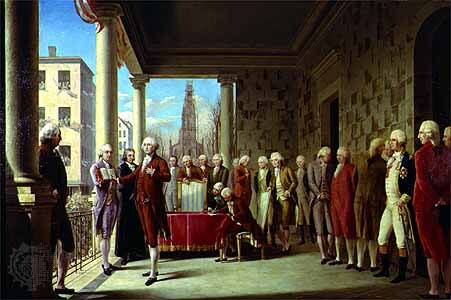This Lower Broadway boot scraper may have been used by a US President
When St. Paul’s Chapel opened at Broadway and Vesey Street in 1766, it was conceived as a “chapel-of-ease” for New Yorkers who lived on the outskirts of the city (at the time, roughly Chambers Street) and weren’t keen on traversing the unpaved streets to Trinity Church, the city’s Anglican house of worship.

A decade later, however, Trinity Church was destroyed in the Great Fire of 1776. St. Paul’s had been saved by a bucket brigade, so it became the main church until Trinity was rebuilt in 1790.
Among the elite, well-heeled worshippers at St. Paul’s was George Washington.
The first American president prayed at St. Paul’s following his inauguration at Federal Hall on April 30, 1789—and he continued to attend services there for the brief period when the Presidential residence was in Lower Manhattan and New York was the nation’s short-lived capital city.

The very pew where President Washington prayed has been preserved inside the chapel as a historical site. But what about another historical artifact Washington may have used when he arrived to attend services: the iron boot scraper just outside the front entrance?
Readers of this site know all about boot scrapers. These always functional, sometimes fanciful metal devices were located by the main door of any fine residence or building. Visitors would use them to scrape off the dirt and debris from their shoes before entering a home, business, school, or church.
They seem odd today, but boot scrapers were necessities in muddy, garbage-strewn, manure-filled Gotham through the 19th century.

Of course, it’s impossible to know if President Washington actually used this boot scraper (or the one on the southern side of the entrance). In his diary he includes several mentions of going to St. Paul’s “in the forenoon,” but he didn’t record anything about scraping his boots there.
Still, it’s certainly possible he ran his heels across the blade. Boot scrapers were made of iron, so durable that many of them still exist today, especially outside residences. And the boot scrapers at St. Paul’s are in as good a shape as the black iron fence around Bowling Green Park, which dates back to the 1770s.

St. Paul’s Chapel (above, in 1812) underwent a restoration in 2016, which included landscaping, steeple repair, and repainting. But the church website chronicling the restorative measures doesn’t mention anything about replacing the boot scrapers.
President Washington departed New York City for good in August 1790. The boot scrapers outside St. Paul’s Chapel remain. And even if they came after Washington’s era, these relics are still delightful reminders of a vastly different (and filthier) post-colonial city.

[Third image: Wikipedia; fourth image: NYPL Digital Collections]



